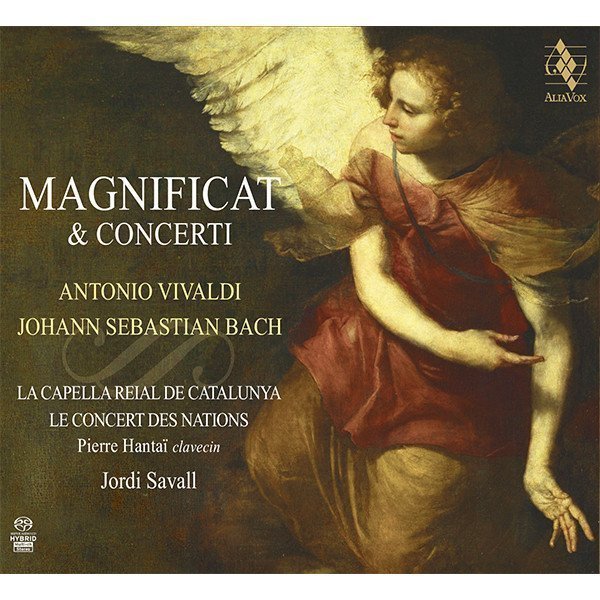MAGNIFICAT & CONCERTI
A. Vivaldi — J.S. Bach
Jordi Savall, La Capella Reial de Catalunya, Le Concert des Nations
21,99€
Referència: AVSA9909
- Jordi Savall
- La Capella Reial de Catalunya
- Le Concert des Nations
J. S. Bach’s Magnificat, the choral music of Tomas Luis de Victoria, the third Sonata for Viola da gamba and Harpsichord and Wolfgang Amadeus Mozart’s Requiem belong to the earliest musical experiences of my childhood and teens. Those first encounters made such an impression on me and illuminated so clearly the future direction of my life, that sometimes it is as if I were still searching for those ineffable pieces of music that gave me so much joy at that time in my life.
J. S. Bach’s Magnificat, the choral music of Tomas Luis de Victoria, the third Sonata for Viola da gamba and Harpsichord and Wolfgang Amadeus Mozart’s Requiem belong to the earliest musical experiences of my childhood and teens. Those first encounters made such an impression on me and illuminated so clearly the future direction of my life, that sometimes it is as if I were still searching for those ineffable pieces of music that gave me so much joy at that time in my life.
At the age of six, when I began training as a chorister at the religious school in Igualada, I gradually discovered along with the other children the beauty of Gregorian chant and the wonderful music of Tomás Luís de Victoria and other Golden Age masters. I can also still remember as if it were yesterday the powerful impression made on me when I first listened to a recording of J. S. Bach’s Magnificat and, almost simultaneously, Bach’s third Sonata for Viola da gamba and harpsichord performed by Pau Casals on the cello and Mieczysław Horszowski at the piano (at that time I didn’t even know that it was a work for viola da gamba!) It was the end of a swelteringly hot summer, and at the age of 10 I was slowly recovering from a serious typhoid infection from which I very nearly died. During the two months of my long convalescence, the only personal happiness I enjoyed was reading a little and, above all, listening to music on my little radio all day long. I was immediately and permanently overwhelmed by the beauty of those performances and even more so by the intense emotion radiating from those old scores by Bach. After battling against serious illness, day by day I began to experience the benefits of music for both my body and my soul. It was truly staggering to realize that those powerful works, created and performed by mortal human beings, have become immortal masterpieces, thanks to their beauty and depth of emotion.
+ information in the CD booklet
JORDI SAVALL
Cuba, Lisbon and Bellaterra, Autumn 2014
Translated by Jacqueline Minett







Share